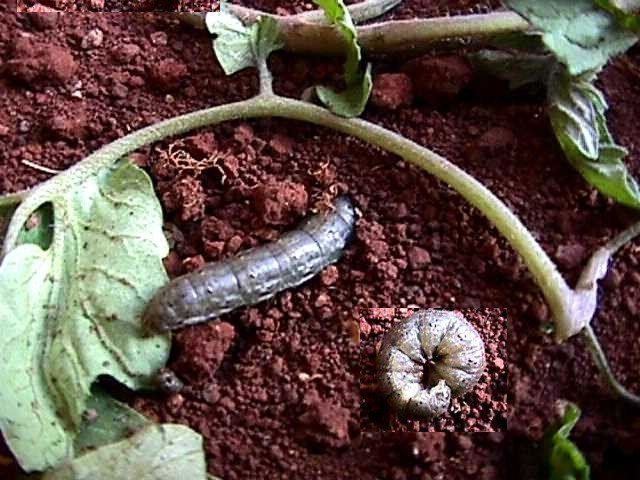

Certain insecticides of synthetic, organic or inorganic origin function as insect repellents, causing little or no harm at all to the target insects. Insecticides in wide use are mostly synthesized organic compounds, though there are some organic compounds of plant origin referred to as “botanicals”, in addition to inorganic compounds of natural and synthetic origin.

Substances used to kill or control insect pests can also be referred to as pesticides, though the latter word has a wider scope of application, since other non-insect pests also exist. It is documented that the use of insecticides by man dates as far back as 1000 B.C, or earlier when burning of stone containing sulfur (brimstone) was used as a fumigant. Insects pests affect humans directly by transmitting diseases or indirectly by attacking cultivated plants in farms or in storage, thus affecting food security. The larvae are greenish-gray and often curl up into a C-shape.Insecticides are toxic substances that are used to kill or control insects. However, it is not unusual to find army cutworm above ground when populations are high (Figure 1). When scouting, it is critical to dig in the soil around individual canola plants to find the larvae. Army cutworms behave nocturnally and typically spend the daylight hours below ground.

The economic threshold for chemical control is 1-2 cutworms per foot of row. Where infestations are high, army cutworms will remove all leaf tissue, leaving only the base of the stem (Figure 3). When minor feeding is observed, you may find leaves severed from the plant and laying on the soil surface. The larvae feed on the leaf tissue, leaving the plants with a fed-on appearance (Figure 2). Significant army cutworm pressure has been observed in fields northwest of Caldwell in Sumner County.Īrmy cutworms feed aggressively and significant damage can occur in a short period of time.

With the onset of warmer temperatures, winter canola is breaking dormancy and army cutworms are now present in fields across Kansas.


 0 kommentar(er)
0 kommentar(er)
